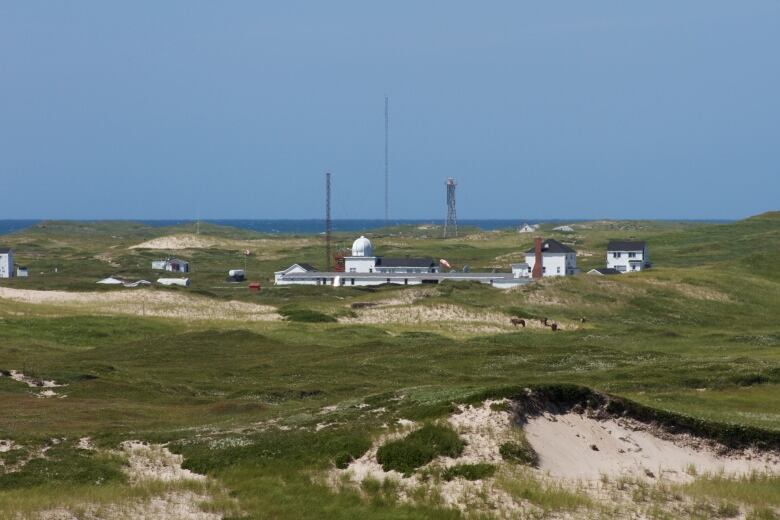Sable Island: Battered by wind and waves

Often shrouded in fog and battered by storms, Sable Island can be subject to severe weather conditions including the strongest winds in Nova Scotia.
But because it's tempered by the ocean, temperatures are milder than on the mainland it's generally between 5 C and 5 C in the winter and doesn't usually go above 25 C in the summer.
The climate of Sable Island largely accounts for why there were so many shipwrecks before advanced navigational equipment made it onto commercial vessels. The older navigational instruments relied on taking a sighting from the sun or the stars making them useless in dense fog or cloudy skies.
And Sable is foggy: it averages at least one hour of fog on 125 days a year. Toronto, by comparison, has about 35 foggy days.
The fog is produced by the warm air from the Gulf Stream when it hits air thats been cooled by the Labrador Current a process that happens to occur just above Sable Island.
Those currents make navigation tricky, especially in storms. And Sable lies in the path of most storms that track up the Atlantic coast of North America.
Unique meteorological station
The only permanently staffed facility on Sable Island is the meteorological station, which is run by Parks Canada and Environment Canada.
People started gathering weather data on the island in 1871 when the Meteorological Service of Canada was created and it's been continuous since 1891 when the station was built.
"The data set that is available from the research that is being conducted on Sable Island is effectively unique in the world. It's an extraordinary data set. It's been collected for a very long period of time. The island is essentially oceanic," said Martin Willison, a conservation biologist.
"Therefore, the information that is collected there cannot be collected from any other site and it feeds into basically a massive grid of data collection that is essential for weather forecasting. So it's extremely important for the Atlantic region of Canada to have that weather station there to know what's coming at us from various directions."

Environment Canada began measuring levels of carbon dioxide in the atmosphere above Sable Island four decades ago, to monitor how pollution is transported in the air. Scientists have also studied the chemistry of the frequent fog and the composition of the toxins it carries.
Randall Martin, a physics and atmospheric science professor at Dalhousie University, said Sable Island's unique location meant scientists could gather data away from human interference.
"Imagine if you were trying to characterize pollution levels for Halifax and you were located outside of a bus station and the buses kept coming in and out and in and out. Well, then you'd be measuring what the buses were doing but you wouldn't get a very good understanding of what's happening in the broader region of Halifax," he said.
"Sable Island offers one of the few remote island sites across the North Atlantic and therefore is uniquely positioned to understanding how activities in North America are affecting the atmosphere beyond North America throughout the rest of the world. The implications for that are for air quality from a global perspective, for climate."












_(720p).jpg)


 OFFICIAL HD MUSIC VIDEO.jpg)
.jpg)



























































































